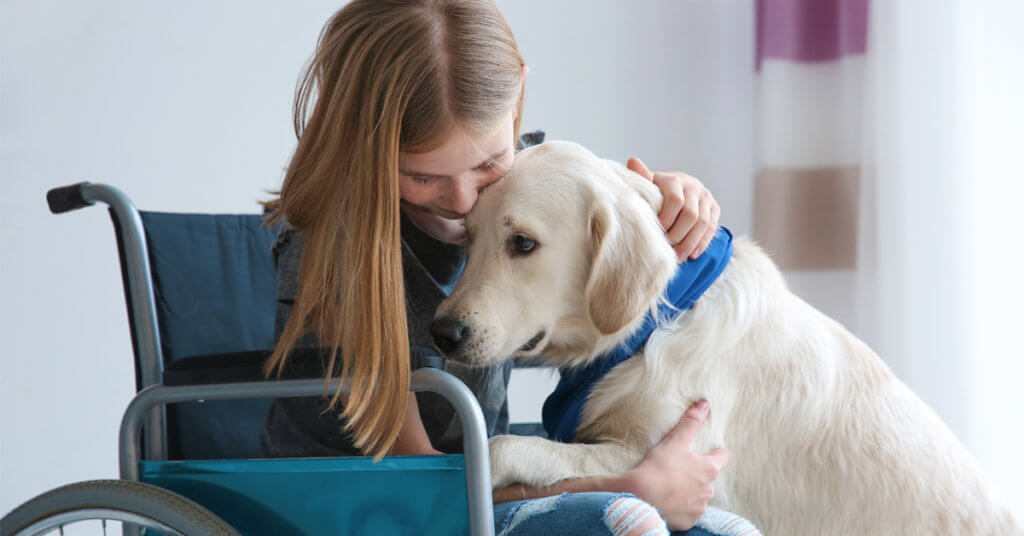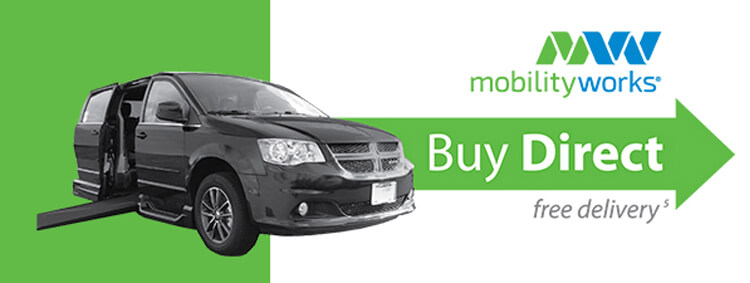Service dogs are very important to thousands of persons with disabilities across the country. Nearly 500,000 dogs work hard every day to make sure their handlers are taken care of and healthy. Whether someone has a visual impairment, a seizure disorder, diabetes, or any other physical, emotional, or mental disability, a service dog can be trained to help them. They grant people the independence and freedom to live and work on their own in a world full of obstacles.
Obtaining a service dog is a very specific process. Throughout the country there are different individuals and organizations who train and raise service dogs until they are able to work. A great guide to finding organizations that offer trained dogs can be found in this blog, The Ultimate Guide to Getting a Service Dog. Many organizations offer fully-trained dogs at no cost to an applicant, which is incredible given they can easily cost upwards of $25,000.
However, it is also possible to train your service dog at home. If you’re looking to train your dog to become certified, there are many steps to take. There a many reputable books and guides that can also provide you with crucial information in this process. Here are the general steps to training your dog to become a service dog.
- Understand the Requirements
It’s extremely important to be aware of the legalities behind what a service animal is and what it entitles you to as their handler. This will make sure you are in accordance with all laws and will be able to advocate for yourself in situations where you may be challenged. A service animal is defined as dogs who are trained individually to work for people with disabilities. Since March of 2011, only dogs can be recognized as service animals, which is described in titles II and III of the ADA. By this act, these dogs are also required to have access to state and local governments, businesses, and nonprofit organizations. More information can be found in an overview published by The US Department of Justice on service animals. - Understand your Dog
After learning about your rights, it’s time to look at your dog to understand them and asses what may need to be done. While any breed can become a service dog, certain ones may work better for people with specific disabilities. For example, bigger breeds such as German Shepherds and Labradors can provide stability to someone with trouble walking. It’s also important to understand their age, if they have been neutered, and their current state of health. Ideally, dogs should be older than 6 months old to be past their puppy stage, should be neutered to minimize aggression, and should be in good health. - Assess their Personality
This can depend greatly on the dog’s breed, something else to take into consideration if you’re looking to get your dog soon. Certain traits can help the dog to fit your needs, but they should ideally be a mix of calm and alert. While dogs can sometimes be trained to reduce their natural aggression, be aware it is something additional you’ll have to address. - Find a Local Trainer
It can be an extremely laborious and tedious process to train a dog to the level at which you will need it to be trained. If you have experience in training dogs, it can still be helpful to work with a trainer to make a plan to help you throughout the process. They are also a great resource to have if you run into any problems and need help. There are no requirements that a trainer must have to train a service dog, so it’s up to you to find someone you trust. - Train your Dog
Whether you’re letting a trainer do most of the training or taking it into your own hands, you’ll have to practice with your dog at home. There are no specific requirements for time spent training, but a common recommendation is at least 120 hours over 6 months. Some of this time should also be spent in public to get the dog used to other people, busy environments, and problems you may encounter while out of your home. - Public Access Test
Many resources from the International Association of Assistance Dog Partners (IAADP) will be helpful in this process. They have developed a set of Minimum Training Standards for Public Access, which include 6 standards:- A minimum of 120 hours of schooling over six months or more, including 30 hours in public spaces.
- Mastering obedience skills of Sit, Stay, Come, Down, Heel, and a dropped leash recall in a store. These can be to verbal or hand commands.
- Demonstrating appropriate manners including: no aggressive behaviors, no soliciting petting or food while on duty, no sniffing people or things in public, walking calmly in public, and ignoring dropped food.
- Performing disability related tasks, which will vary greatly by individual handlers.
- No training can have been done to promote aggression in any situation.
- The ability of a trainer to properly handle their dog and keep them healthy. To see an overview of standards and resources, please visit their website here. Once you and your trainer feel your dog is ready to become certified, it’s time to take the Public Access Certification Test (PACT). This can be found on the website of Assistance Dog International, ADI, here. There you will find the specific requirements of what should be captured on video and submitted to prove the abilities of you and your dog as a team.
- Certification and Registration (formatting) Documentation of the training process, PACT, and registration is necessary to take your dog into public spaces. Wherever you choose to register your dog to, such as the United States Service Dog Registry, will present you with some sort of ID card for your dog. In case you’re ever asked for proof of registration, it’s a good thing to keep on hand.
Whether you have a dog you’re looking to train or are hoping to adopt a new friend soon, it is possible to train your dog to become a registered service animal. While the process may be long, there are resources across the country to help you to successfully train your furry friend. The websites of ADI and IAADP are great places to find information when you start your journey!
Stay Connected!
Sign-up with our email list to receive our latest promotions, news and events!




